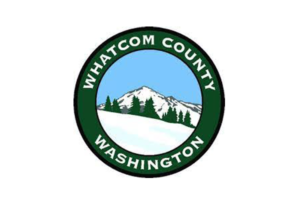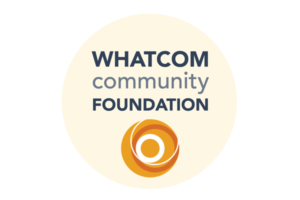The regionally-based, source-identified wholesale supply chain, once a creature of mystery reserved for the imagination of a handful of optimistic change-makers, is now a successful tool for creating market opportunities for agricultural producers and conveniently delivering safe food to consumers. Here at New Venture Advisors, we often work with groups that come to us with questions about how to develop or strengthen a wholesale supply chain for their region’s food system. While there are unique barriers and opportunities within each region, a common obstacle that continues to emerge is misalignment between the requirements of wholesale buyers and the on-farm procedures and capabilities of producers. Compatibility between farm production and procurement policies can be built through increasing producer wholesale readiness, and we are excited to share an invention developed with an award-winning county planning team that will do just that.
What is wholesale readiness?
Broadly speaking, wholesale readiness refers to a producer’s ability to produce for and sell to wholesale buyers like grocery stores, schools, hospitals and universities, which tend to have specific standards in place for their food suppliers. Many small to mid-sized producers successfully sell their product through direct-to-consumer sales channels such as farmers’ markets, CSAs or farmstands, where trust, rather than explicit standards, guides the transaction. Trust is gained through visits to the farm, conversations at a farmers’ market or content on websites. This trust-based procurement system does not translate to wholesale when middlemen deliver product from the producer to the end user. Separated from the producer, the end user puts trust in a regulating body, be it the government and/or the produce industry, which introduces standards, procedures and regulations to ensure that food reaches them in a high quality, safe and properly packed manner.
Many people associate wholesale readiness with GAP certification or similar food safety requirements, yet food safety (and third-party audits in particular) is just one component of a broad suite of requirements that wholesale buyers may have in place for growers. Other aspects of “wholesale readiness” include:
- Production Quantities and characteristics of a grower’s current and potential production
- Scalability Grower’s experience, training and perspectives / motivations with respect to wholesale
- Post-harvest handling Grower’s knowledge, skill, infrastructure and current practices with respect to post-harvest handling, including cooling, grading, packing, washing and cold storage
- Sales and marketing Producer’s current practices and capabilities with respect to sales, marketing and managing transactions with wholesale buyers
- Distribution Producer’s current knowledge, infrastructure and/or partnerships related to product delivery and maintaining the cold supply chain through distribution
- Food safety General food safety knowledge, on farm practices and protocols, and certifications
Meeting the expectations of wholesale buyers across these dimensions can be challenging for producers less accustomed to wholesale markets, and in turn for food hubs that strive to create higher incomes for farmers by connecting them with large wholesalers whose purchasing and pricing standards vary drastically from direct to consumer markets.
Measuring wholesale readiness
In a recent food hub development project, it became clear that in order to serve as many growers as possible, the food hub would need to help producers prepare to work effectively with large wholesale buyers. In an effort to identify existing resources and new programs that could improve producers’ capacity to sell into increasingly demanding wholesale buyers, we identified “model” farm characteristics against which to benchmark the capacity of area farms. This led to recommendations for the structure of a wholesale readiness program for producers selling into the prospective food hub.
To tailor the program to the specific needs of producers, we created a self-assessment rubric that guides producers through a series of questions covering the categories above and returns a wholesale readiness score. The rubric is built from the premise that wholesale readiness is a spectrum, not a checkbox. Some farms may not be considered “ready” in any of the aforementioned categories, some may rate high on all measures, and some may just need support or infrastructure to improve their readiness in one or two specific areas.
This rubric will allow the food hub to gauge the readiness of its supply base each year and to determine the training and equipment needed to assist growers in meeting the requirements of end customers. Producers will receive a wholesale readiness score for each of three buyer types that the food hub may serve, arranged on a spectrum from flexible to stringent.
- Stringent The most stringent buyers typically have very high expectations with respect to quality, consistency, food safety, liability and professionalism. This group includes food service operations at large institutions serving vulnerable populations such as the young, elderly and/or ill, multi-location food service operations such as national restaurant chains, and national retailers such as large scale grocery stores. This category also includes regional and national broadline distributors that serve the previously described types of buyers.
- Moderate More moderate buyers typically require producers to meet basic regulations with respect to food safety (such as the Food Safety Modernization Act) and will have a lower threshold of requirements with respect to product quality, volume, consistency, etc. In this category are certain institutional and corporate foodservice buyers serving less vulnerable populations, independent or regional grocery stores, and buyers who might otherwise be “stringent” but have made a strong commitment to purchasing local and are willing to flex their requirements. Some regional distributors fall into this category, particularly those specializing in providing local, farm fresh food.
- Flexible While these types of buyers expect growers to have good growing practices and produce food-safe, high-quality products, they are more flexible in their requirements. They are willing to compromise on some dimensions and have much more informal purchasing practices, making it possible for them to work with a wide variety of producers. This group includes smaller scale wholesale buyers such as independent restaurants, independent grocery stores and specialty stores. Food hubs that aggregate and sell to consumers through CSA programs and similar services also often have flexible requirements.
The goal for producers, buyers, and any middleman, is to find compatible producers and buyers from which a supply chain can be developed. Considering wholesale readiness as an aggregation of many different protocols can be more encouraging for producers. They may see themselves moving forward along a spectrum, continuing to expand the types and size of markets into which they can sell, versus limiting their options to direct markets only.
Putting it into practice
This assessment rubric is designed to take a “litmus test” of the readiness within a producer community for the purposes of determining the scope of potential training programs, types of necessary infrastructure investments and initial customer segments to target within a sales and marketing strategy. The assessment is intended to be used for directional guidance, and any strategic implications must also be vetted through interviews, surveys and/or producer meetings to ensure the resulting programs are well matched to stakeholder needs and interests. It should also be noted that as the regulatory environment around food safety continues to be set, this tool will need to evolve.
Giving credit
This work is the outcome of a public-private planning partnership led by the land use planning department of Kane County Illinois. Our partners in Kane County have a remarkable sense for the groundwork that will be most beneficial to future business owners and operators. When our initial research flagged wholesale readiness as important to the success of a food hub, the County commissioned an additional phase of research to map the region’s producers along this spectrum, the resources already available to help them, and the technical assistance and infrastructure gaps a food hub could fill.
There are many other wonderful organizations and groups that view wholesale readiness as a priority for the good food movement. Great programs and workshops exist right now to help expand market opportunities for producers. They are offered through the internet, live in local markets and as destination trainings across the country. To find out more about existing resources, you might first contact your local extension office to learn about programs that may be planned for your region and state. Two other national resources are the in-person FamilyFarmed.org Wholesale Success Workshops that work with organizations across the country each year thanks to funding from USDA Risk Management Agency, and the National Good Agricultural Practices Program at Cornell University that offers both online and in-person training sessions.
The existence of these programs demonstrates that the full range of wholesale readiness, not just food safety, is critical to the development of viable market opportunities for American producers. Using a rubric to understand the current readiness of producers and the requirements of wholesale buyers within a region can ensure that any training programs are developed to most effectively meet the needs of producers with the goal of building more regionally-based, source-identified wholesale supply chains.



